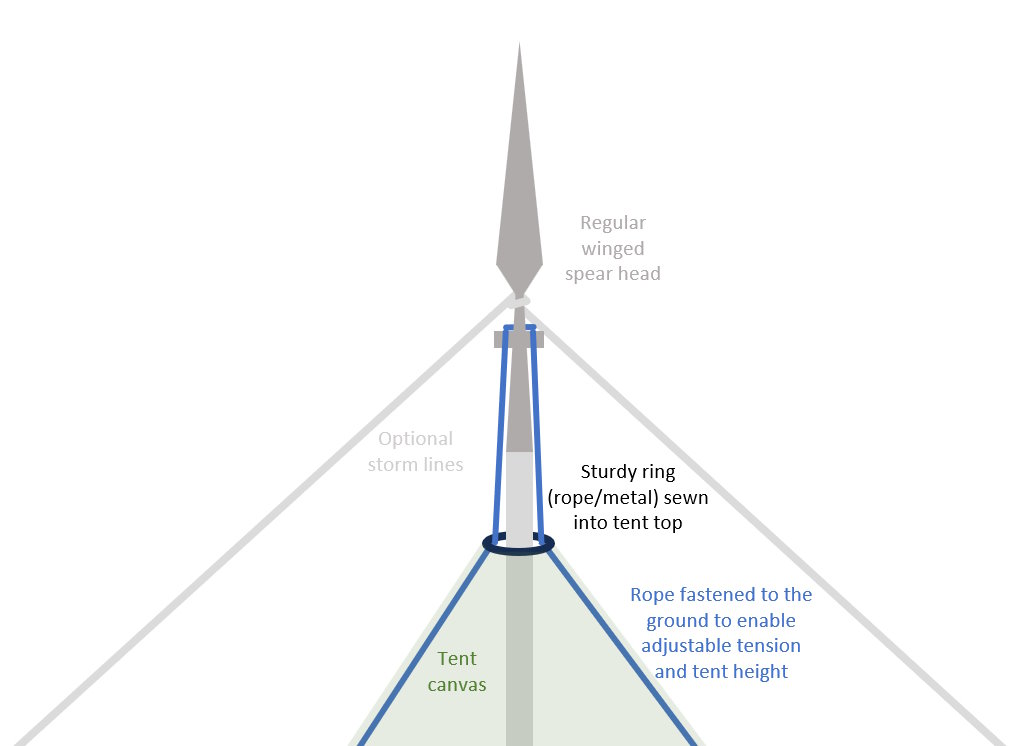Medieval tent construction
While visiting medieval venues I always find that the most cumbersome thing to bring is a tent. I've participated in sewing several medieval tents and baldachins, and they always seem to be mostly timber.
If you want to use a tent for travelling, you probably also want to make it light weight.
Using a spear as a tent pole has its obvious drawbacks in that the spear shaft might get crooked or bent, the disadvantage of not being able to use the spear for defence while the tent is up, and probably a few more. However, in reenactment it could make for one less thing to pack, while still being able to display your cool spear.
You don't necessarily need a spear for this construction, it's just a bit cool. You could make do of a regular pole with a hole running through it. Maybe that's why so many depicted medieval tents have a large ball to top the tent pole off? It could be there to cover the hole through the tent pole?

Further improvements could be that the ring/loop might be a spliced rope eye as a top, so you don't have to use two ends of the adjustable tension rope to the ground.
Advantages
- You get an adjustable tent tension for when the canvas expands or shrinks due to moist.
- It's easier to rise the tent on un-even ground since the tent canvas is pulled up by a rope, not a fixed height tent pole.
- You make clever use of the wings of the spearhead.
Disadvantage
- I haven't been able to find any reference to using spears for tent poles in any medieval manuscript.
- The spear might become damaged.
- For high/large tents you may need an awfully long spear.
Conclusion
At the end of the day, I'd prefer to NOT use a spear for rising tents. I'd prefer to bring a detachable split tent pole for ease of travelling in car without a trailer or stuff on the car roof. The reasons are both about being true to historical references, but also for packing comfort. Some countries I've travelled to has a problem bringing spears.